Advertisements
Advertisements
प्रश्न
In the circuit shown in the figure, ε1 = 3 V, ε2 = 2 V, εa = 1 V and r1 = r2 = r3 = 1Ω. Find the potential difference between the points A and B and the current through each branch.

उत्तर
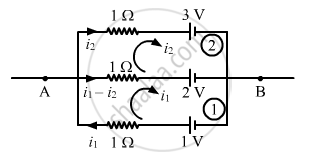
Applying KVL in loop 1, we get:-
\[i_1 + \left( i_1 - i_2 \right) - 1 + 2 = 0\]
\[2 i_1 - i_2 = - 1 .............(1)\]
Similarly, for loop 2:-
\[i_2 - \left( i_1 - i_2 \right) - 2 + 3 = 0\]
\[2 i_2 - i_1 = - 1 ............(2)\]
Solving (1) and (2), we get:-
\[i_1 = i_2 = 1 A\]
Potential difference between A and B:-
\[V_A - V_B = E_2 - \left( i_1 - i_2 \right) \times 1 = 2 - \left( 1 - 1 \right) = 2 V\]
Current through the top branch = i2 = 1 A
Current through the middle branch = i1 - i2 = 0 A
Current through the bottom branch = i1 = 1 A
APPEARS IN
संबंधित प्रश्न
In the following potentiometer circuit, AB is a uniform wire of length 1 m and resistance 10 Ω. Calculate the potential gradient along the wire and balance length AO (= l).
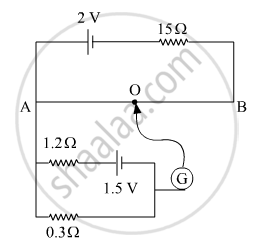
In a series LCR circuit, what is the phase difference between VL and VC where VL is the potential difference across the inductor and V c is the potential difference across the capacitor?
Why is potentiometer preferred over a voltmeter for comparison of emf. of cells?
The emf of a cell is always greater than its terminal voltage. Why? Give reason.
The current in a conductor and the potential difference across its ends are measured by an ammeter and a voltmeter. The meters draw negligible currents. The ammeter is accurate but the voltmeter has a zero error (that is, it does not read zero when no potential difference is applied). Calculate the zero error if the readings for two different conditions are 1.75 A, 14.4 V and 2.75 A, 22.4 V.
The following figure shows a part of a circuit. If a current of 12 mA exists in the 5 kΩ resistor, find the currents in the other three resistors. What is the potential difference between the points A and B?

Find the potential difference Va – Vb in the circuits shown in the figure.
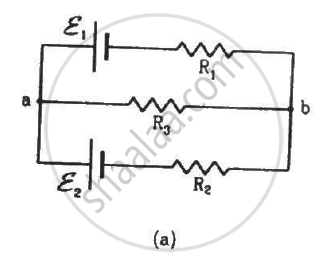
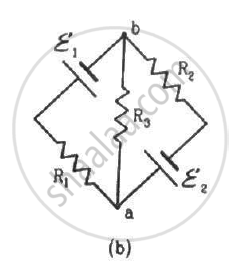
A voltmeter of resistance 400 Ω is used to measure the potential difference across the 100 Ω resistor in the circuit shown in the figure. (a) What will be the reading of the voltmeter? (b) What was the potential difference across 100 Ω before the voltmeter was connected?

A voltmeter consists of a 25 Ω coil connected in series with a 575 Ω resistor. The coil takes 10 mA for full-scale deflection. What maximum potential difference can be measured by this voltmeter?
A potential difference of 220 V is maintained across 12000 Ω rheostat. Then voltmeter V has a resistance of 6000 Ω and point C is at one fourth the distance from a to b. Then the reading of voltmeter is ______.
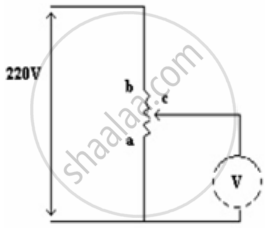
In the circuit in figure the potential difference across P and Q will be nearest to
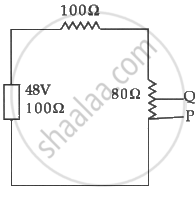
Two sources of equal e.m.f are connected to an external resistance R in series. The internal resistance of the two sources are R1 and R2 (R2 > R1) If the potential difference across the source having internal. resistance R2 is zero, then ______.
The terminal potential difference of a cell is greater than its e.m.f when it is ______
